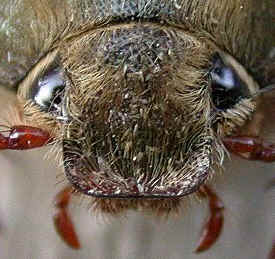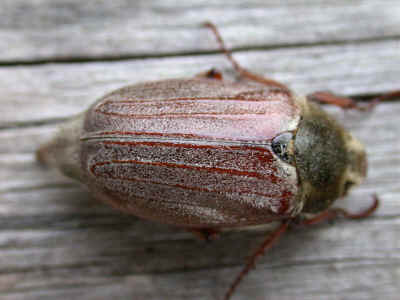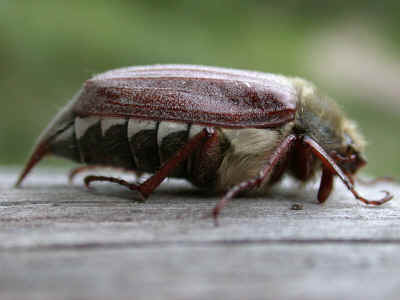Correct!
Mystery Picture Answers
No. 5
|
||
The head of a Common Cockchafer or Maybug Melolontha melolontha. At 20-30mm in length this beetle is often seen flying towards lights during the warm evenings of May and June. The May Bug used to be a serious pest to farmers as the larvae eat their way through large quantities of the roots of crops in fields. The consequent use of insecticides has reduced their numbers in many areas of Europe. The lifecycle is around three to four years long. The adult female visits fields where she burrows into the ground some 20-30cm to lay a batch of 25-30 eggs. The larvae eat through plant roots before burrowing down to a greater depth of 30-40cm where they will hibernate over the winter months. They eventually pupate during the summer months and the adults emerge before autumn. Freshly emerged adults will hibernate overwinter before visiting woodland during the spring to feed on a variety of deciduous tree leaves including oak, birch, rowan and beech. When they have fed the females return to the fields to lay their eggs; the first of up to three batches during the spring and summer. The adults return to the woodlands to feed between laying each batch of eggs. Throughout Britain, Maybugs are most frequently seen in southern England.
|
Back to Mystery Picture Gallery


